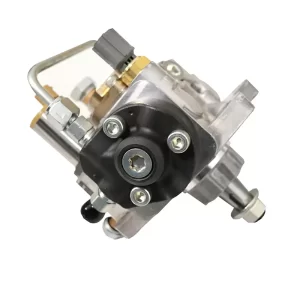A high-pressure pump and a normal pump are two types of pumps used in various applications. While they both serve the purpose of pumping fluids, there are several differences between them.
Pressure Capacity
The fundamental difference between a high-pressure pump and a normal pump lies in their pressure capacity. A normal pump is designed to operate within a standard pressure range, typically up to a few hundred pounds per square inch (psi). On the other hand, a high-pressure pump is specifically designed to handle much higher pressure requirements, often ranging from several hundred to thousands of psi.
Construction and Materials
High-pressure pumps are constructed using more robust materials to withstand the increased internal forces exerted by the pumped fluid. They generally incorporate stronger components such as reinforced casings, thicker walls, and heavier-duty seals. Normal pumps, while still durable, are not designed to withstand the same extreme pressures and may use lighter materials.
Power Requirements
Due to the higher pressures involved, high-pressure pumps usually require more power to operate efficiently. They often feature larger and more powerful motors or engines compared to normal pumps. The increased power requirement is necessary to generate the force needed to overcome the resistance provided by the high-pressure conditions.
Applications
High-pressure pumps are commonly used in applications that demand the ability to move fluids under significant pressure. These include industrial processes such as water jet cutting, chemical injection, pressure washing, oil and gas exploration, and hydraulic systems. Normal pumps, on the other hand, are used in everyday applications such as home plumbing, irrigation, circulation of fluids in heating and cooling systems, and transferring liquids between containers.
Cost
Due to their specialized design and construction, high-pressure pumps are generally more expensive than normal pumps. The additional engineering, high-grade materials, and increased power requirements contribute to the higher cost. Normal pumps, being more common and versatile, tend to be more affordable.
Efficiency and Maintenance
High-pressure pumps often require more frequent maintenance due to the higher stresses they endure. The components may experience faster wear and tear, requiring regular inspections, repairs, and part replacements. Normal pumps, operating at lower pressures, generally have longer intervals between maintenance activities and may have fewer high-stress components.
In conclusion, the main difference between a high-pressure pump and a normal pump lies in their pressure capacity, construction, power requirements, application range, cost, and maintenance needs. Choosing the right type of pump depends on the specific pressure requirements and the intended application for efficient fluid pumping.



